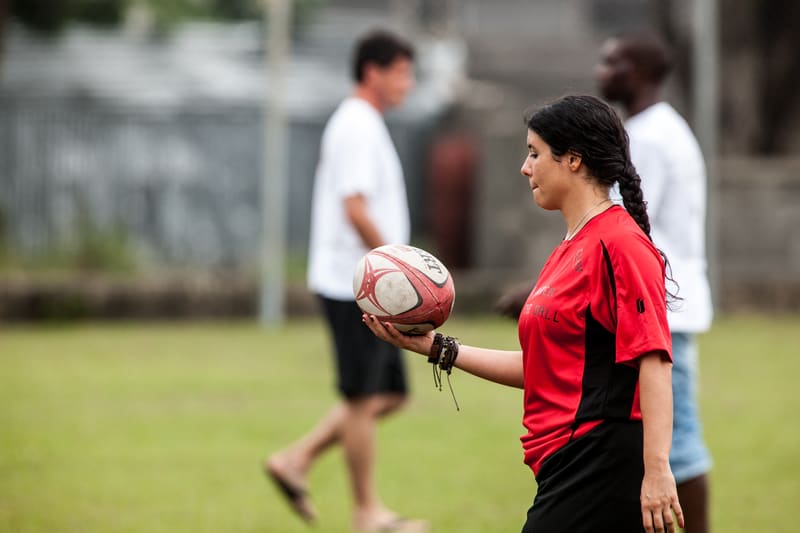
The complex nature of rugby is likely one of the biggest barriers to entry for folks interested in giving the game a go. But is it actually so hard to learn? Here’s my view.
Rugby is a complicated game with many rules that will take time to learn and understand. There are numerous positions which require different skill sets and specific training for those positions. The contact nature of rugby means that orthodox techniques must be learnt in order to play the game safely.
If you’re going to play rugby, you’ll need to learn: 1. The different techniques and skill-sets required to be able to play the game. 2. The basic concept and rules of the game of rugby.
In this post I’ll outline both the basic objective of the game and the techniques you’ll need to learn, to play it.
The techniques that every rugby player needs to learn
On a rugby team there are two categories of player. A forward and a back. There are eight forwards and seven backs on a team. The forwards and backs play very different roles in the game. There are techniques that you will need to learn as a forward, that you wouldn’t need to learn as a back and visa versa.
To complicate things a little more the forwards and backs in a team also play different roles on the pitch to each other depending on the position they play in. These roles require very specific skill-sets and techniques (especially for the forwards) that will only need to be learnt by the people playing in that position.
Although this sounds complicated and is pretty technical, it’s important to remember that not every player needs to learn all these techniques. They only need to focus on the techniques and skill sets required for their specific position. If every player had to learn and master every technique and skill-set in order to play rugby, then it would be nigh on impossible to learn.
Whether you’re a forward or a back, there are some techniques that every player on the pitch needs to learn.
Passing the ball
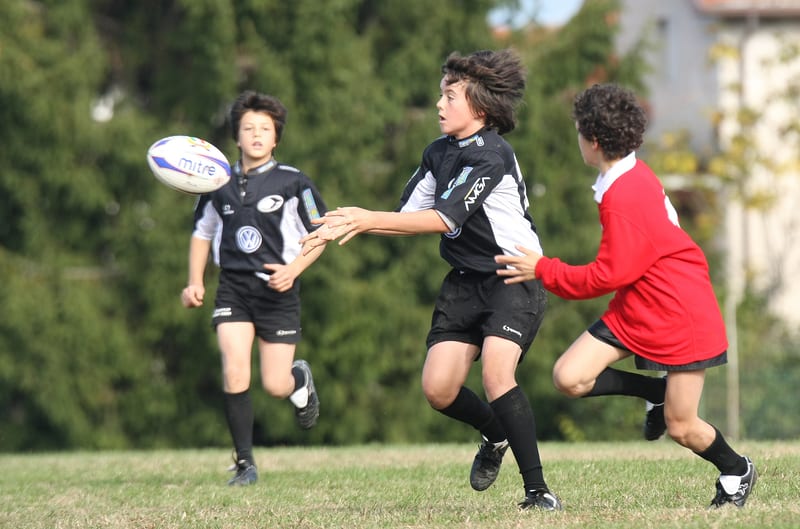
Passing the ball is an essential skill that anyone who wants to play rugby will have to learn to do. It’s not that hard to learn the basics, but to master it in terms of accuracy, timing and the ability to pass out of both hands (to the left and the right) takes time, patience and practice.
Passing the ball enables the team to retain possession and as a result the advantage in the game. The ball cannot be passed forwards in a game of rugby.
Making a tackle
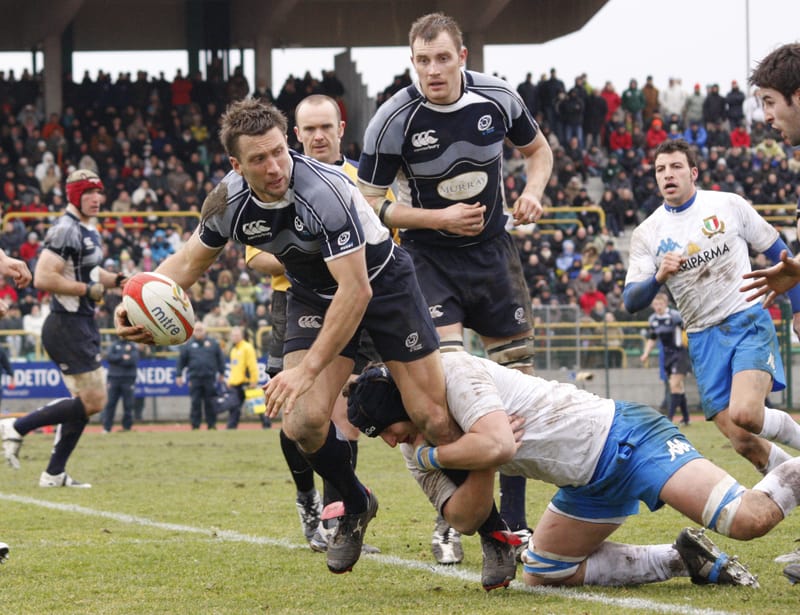
In attack, the primary objective of a team is to score a try. In defence, the team’s primary objective is to stop the other team getting over the try line and scoring a try.
The only way to stop the opposition team running with the ball in hand is by making a tackle. This makes tackling possibly the most important skill and technique in rugby. Every player must learn how to tackle. And they must learn how to do it safely.
There are different ways of making a tackle and learning all of these will take time and practice and a bit of pain on the journey! However, the basic tackling technique and how to do it safely can be taught and learnt pretty quickly.
The techniques that every rugby forward needs to learn
How to scrummage
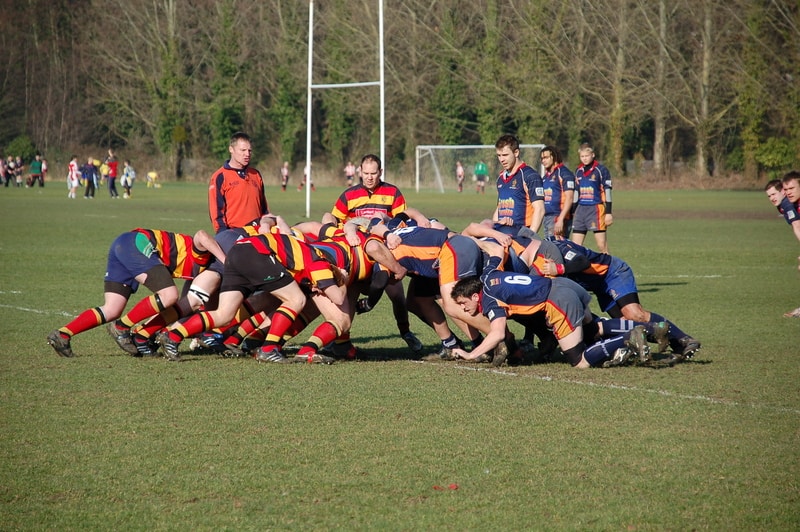
A scrum is awarded for various infringements in open play. It’s a way of restarting the game, with one team having an advantage on the restart by getting the ‘put in’ to the scrum.
The eight forwards on each team pack down against each other and contest for the ball that has been fed into the middle of the scrum by the scrum half.
The scrum is a highly competitive, physical and technical aspect of the game that every forward will need to learn. Different forwards in the scrum play different roles that require different techniques.
The lineout
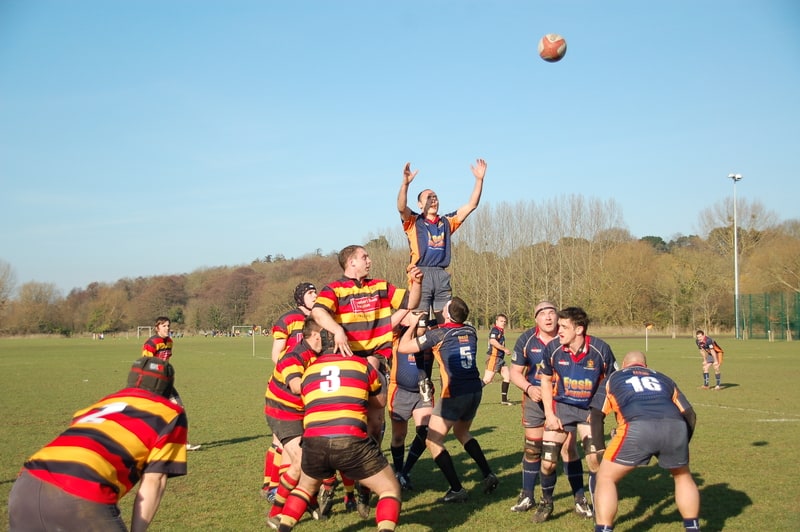
A lineout is the way of restarting play when the ball has gone out of bounds on either side of the pitch. With one team having the advantage by throwing into the lineout.
Up to seven forwards on each team line up. They stand one behind the other, to form two rows, standing next to each other one metre apart.
The hooker then throws the ball into the line out and the players contest for the ball to retain possession.
Every forward will need to learn the technical aspects and tactics of the lineout, along with their own specific role in the lineout. These will take time to learn and will form a large part of the forwards’ training sessions.
For example, the hooker will focus all of his/her attention on practising and perfecting their delivery of the ball into the lineout. No other player on the team will need to learn or practise this skill as it is a role assigned to the hooker alone.
The basic concept of rugby is actually pretty easy to learn
Sure, there’s a lot to get your head around in a game of rugby. However, if you grasp the basics, that’ll be enough to get you on the pitch and playing. Once you’re playing it’ll be a natural progression for you to gradually learn the more intricate aspects of the game.
How to play rugby
A game of rugby is played between two teams of 15 players, on a pitch that measures around 94-100mm long by 68-70m wide. There is an ‘in-goal’ area which varies in size and is between 6-22m long. The in-goal area is the same width as the pitch. Each team is defending one in goal area and attacking the other.
The line that marks the start of the in-goal area is called the try line. This runs the full width of the pitch. A pair of rugby posts stands in the middle of the try line at each end of the pitch.
A senior rugby match lasts around 80 minutes excluding stoppages. The game is played in two halves each lasting around 40 minutes. The half time whistle is blown when the ball first goes ‘dead’ after the 40-minute mark. The full time whistle is blown when the ball first goes ‘dead’ after the 80-minute mark.
After half time, the teams change ends. In other words they defend the in-goal area that they were attacking in the previous half.
The team with the most points at the end of a match wins.
How to score points in a game of rugby
There are four ways to score points in a rugby match:-
1. Scoring a try

This is the primary objective of a team. A try is scored when any player in a team touches the ball down on the ground in the in-goal area that they are attacking. Unlike in a game of (American) football, the ball does actually have to be touched down on the ground. For the try to be awarded:-
- The player’s hand must be touching the ball when the ball first makes contact with the ground
- The player’s hand must be applying ‘downward pressure’ to the ball at the point of contact
The team that scores the try is awarded 5 points.
2. Kicking a conversion
When a try is scored, that team then has an opportunity to kick a conversion. To kick a conversion attempt, the ball is more commonly placed in a kicking tee (players can also drop-kick a conversion attempt but this is less common), opposite the point on the try line that the ball was grounded. A conversion is worth 2 points and is awarded if the player manages to kick the ball between the two rugby posts and above the crossbar.
3. Kicking a drop goal
Although drop goals more usually kicked by the fly-half; any player can kick a drop goal attempt from any position on the pitch. It can only be attempted in open play and is successful if the player manages to kick the ball between the posts and above the cross bar. A drop goal is worth 2 points.
4. Kicking a penalty
Teams are penalised for different infringements of the rules, in the form of the opposing team being awarded a penalty. When awarded a penalty, the captain of the team decides how to use the penalty in order to gain an advantage. One of the options is to take a kick at goal. The ball is placed in a kicking tee on the point where the penalty was awarded. If the player then kicks the ball between the posts and over the crossbar, the team is awarded 3 points.
What I’ve covered above are the essential skills and rules that anyone who wants to play rugby will need to learn.
There are so many other techniques and rules that any player on the field will need to learn. These will be gradually introduced in training sessions and overtime will become skills and techniques that are second nature and built into the muscle memory of every player.
So in summary; no rugby isn’t hard to learn, but it does take time, dedication and practice. Time to learn the numerous rules and subtleties of the game. Time to learn and develop the skills that every player needs and the specific skills needed for each position on the field.
